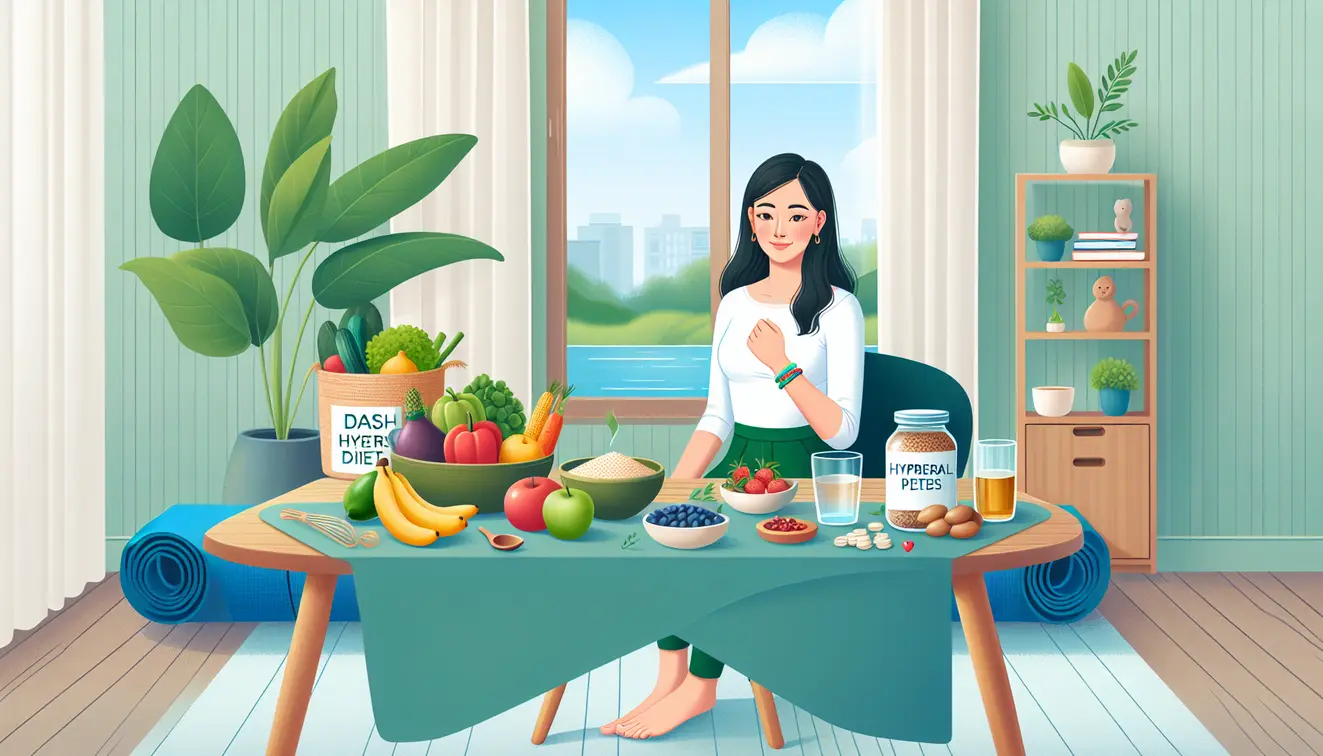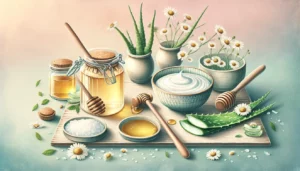Home Remedies For Hypertension: Safe and Effective Natural Solutions
Estimated reading time: 10 minutes
Key Takeaways
- Hypertension affects millions globally and requires a blend of medical and natural approaches for management.
- The DASH diet and specific foods like berries and beets can support blood pressure control.
- Lifestyle changes such as exercise, stress reduction, and proper sleep are powerful tools.
- Herbal remedies like garlic and hibiscus may help but need medical oversight.
- Always consult a healthcare provider before starting any remedy to ensure safety.
Table of Contents
- Introduction to Hypertension and Natural Remedies
- Understanding Hypertension: What You Need to Know
- Evidence-Based Dietary Remedies for Hypertension
- Lifestyle Changes to Manage Hypertension Effectively
- Herbal and Natural Remedies for Hypertension
- Quick Tips for Immediate Blood Pressure Relief
- Precautions and When to Seek Medical Help
- Long-Term Strategies for Preventing Hypertension
- FAQs on Home Remedies for Hypertension
Introduction to Hypertension and Natural Remedies
High blood pressure, or hypertension, touches millions globally, with the World Health Organization noting that nearly 1 in 4 adults faces this silent challenge. It’s a concern that often creeps into our lives through stress or unhealthy habits, prompting many to seek gentle, natural ways to manage it. At WikiHomeRemedies, our purpose is to guide you through safe, evidence-supported home solutions that work alongside medical advice to support your well-being.
Before diving in, remember to consult your healthcare provider, especially if you’re on medication. Natural remedies can help, but they’re not a standalone fix. This article walks you through understanding hypertension, exploring dietary shifts, embracing lifestyle changes, trying herbal options, finding quick relief tips, taking necessary precautions, and building long-term prevention plans. With insights rooted in trusted sources like WHO and NIH, let’s explore how nature’s gifts can support your journey to better health.
Understanding Hypertension: What You Need to Know
What Is Hypertension?
Hypertension means your blood pressure readings often exceed 130/80 mmHg, as defined by the American Heart Association. This condition strains your heart and blood vessels over time, raising risks for serious issues. Keeping track of your numbers with regular checks is a simple step to stay aware of your health status.
When blood pressure stays high, it silently pressures vital systems. Early awareness can make a significant difference. A home monitor or routine check at a clinic helps you stay informed and ready to act.
Causes and Risk Factors of Hypertension
Several factors can push blood pressure up. Stress, family history, a diet heavy in salt, and minimal physical movement often play a role. Other influences include age, carrying extra weight, smoking, or excessive alcohol use. Recognizing these gives you a starting point to make meaningful changes.
Hypertension doesn’t appear out of nowhere. It’s often tied to daily choices or traits you can’t control, like genetics. By understanding these triggers, you’re better equipped to tackle manageable aspects, such as what you eat or how you handle tension, paving the way for natural interventions.
Why Consider Home Remedies?
More people now turn to natural methods as a supportive path alongside conventional care. The desire for holistic options reflects a need for solutions that fit into everyday life. At WikiHomeRemedies, we see these remedies as partners, not replacements, for professional guidance.
These approaches often draw from nature’s bounty, offering gentle ways to ease hypertension’s burden. With safety as a priority, they can complement your doctor’s plan. Let’s look into how adjusting your meals and routines can create a foundation for better blood pressure control. For additional insights on integrating natural solutions for overall wellness, explore our guide on managing stress-related conditions at Home Remedies for a Headache.
Evidence-Based Dietary Remedies for Hypertension
Adopting the DASH Diet
The DASH diet, which stands for Dietary Approaches to Stop Hypertension, is a trusted plan backed by the National Institutes of Health. It focuses on boosting potassium, cutting sodium, and prioritizing whole foods. Think of starting your day with oatmeal topped with a banana or snacking on unsalted nuts.
This eating style encourages vegetables, fruits, lean proteins, and grains while keeping salt low. It’s shown to ease blood pressure in weeks for many. Try a lunch of grilled chicken with steamed broccoli and quinoa—it’s simple and fits the DASH framework perfectly.
Specific Foods to Lower Blood Pressure
Certain foods stand out for their power to support blood pressure health. Berries, rich in flavonoids, help blood vessels relax—add a handful to your yogurt or eat them fresh. A small study from Harvard Health points to their measurable impact on vascular health.
Beets offer nitrates that widen blood vessels. Blend them into a morning smoothie with apple and ginger for a refreshing drink. A single cup can make a difference if consumed regularly.
Leafy greens like spinach and kale bring magnesium and potassium to the table. Toss them into a salad with a drizzle of olive oil. Research from NIH highlights how these minerals calm vessel walls, aiding hypertension management.
Reducing Sodium Intake
Cutting back on sodium is a direct way to ease blood pressure. The WHO suggests keeping it under 2 grams daily. Swap salt for herbs like basil or spices like turmeric, and always check food labels for hidden sodium in packaged goods.
Small changes in cooking habits help. Use lemon zest or garlic for flavor instead of reaching for the shaker. Over time, your taste adjusts, and you’ll find these natural seasonings just as satisfying.
Hydration and Its Role in Blood Pressure
Staying hydrated keeps your body balanced, which supports blood pressure regulation. Aim for 8-10 glasses of water each day, as recommended by the Mayo Clinic. If plain water feels dull, infuse it with cucumber or mint for a twist.
Proper fluid intake prevents dehydration, which can strain your system. Carry a reusable bottle as a reminder. This simple habit ties into broader dietary efforts, setting the stage for other health-focused changes. Learn more about maintaining overall hydration for wellness at Home Remedies for Loose Stools.
Lifestyle Changes to Manage Hypertension Effectively
Physical Activity for Blood Pressure Control
Moving your body regularly can work wonders for blood pressure. The American Heart Association advises 150 minutes of moderate exercise each week. Something as straightforward as a brisk walk for 30 minutes most days fits the bill.
Yoga offers a dual benefit—movement and calm. A session focusing on gentle poses can ease tension. Studies from the CDC confirm that consistent activity strengthens your heart, helping it pump more efficiently.
Stress Reduction Techniques
Stress often fuels high blood pressure, but simple practices can help. Mindfulness and meditation bring your focus to the present, cutting through daily noise. Take five minutes morning and night to sit quietly and breathe.
Try the 4-7-8 breathing method. Inhale for 4 seconds, hold for 7, then exhale for 8. Repeat this cycle a few times. Research from the Mayo Clinic shows such techniques lower stress hormones, offering a subtle but real impact on blood pressure. For additional stress relief strategies, check out our detailed guide at Home Remedies for ADHD.
Weight Management and Hypertension
Carrying extra weight can push blood pressure higher, especially around the midsection. Setting realistic goals, like losing 1-2 pounds (0.5-1 kg) per week, can help. Focus on balanced meals and smaller portions to keep progress steady.
Track what you eat for a week to spot patterns. Pair this with regular walks or light activity. The WHO notes that even modest weight reduction can improve your readings significantly.
Sleep Hygiene for Better Blood Pressure
Quality rest, around 7-9 hours nightly, supports healthier blood pressure. A consistent bedtime routine signals your body to wind down. Skip caffeine or screens an hour before bed to ease into sleep.
A calm bedroom environment helps too. Keep it dark and quiet. NIH research links poor sleep to hypertension risks, making this habit a priority for overall wellness.
Limiting Alcohol and Quitting Smoking
Moderation with alcohol matters—stick to one drink daily for women and two for men, per AHA guidance. Beyond this, pressure on your arteries can spike. Be mindful of serving sizes to stay within limits.
Smoking cessation is equally vital. Each puff narrows blood vessels temporarily. Reach out to resources like local support groups or hotlines, as WHO data underscores the direct harm tobacco poses to heart health.
Herbal and Natural Remedies for Hypertension
Herbs with Potential Benefits
Certain herbs hold promise for supporting blood pressure health. Garlic, for instance, may prevent vessel constriction. Crush a clove into your meals daily—studies on PubMed suggest a mild benefit with regular use.
Hibiscus, often enjoyed as tea, acts as a natural diuretic. Steep dried flowers in hot water for 5 minutes and sip. NIH research indicates it could help lower readings slightly over time.
Hawthorn supports heart function historically. It’s often taken as a tea or extract, but start small. Always check with your doctor, as these remedies need careful integration with any medications per trusted sources like WebMD.
Omega-3 Fatty Acids and Blood Pressure
Omega-3s, found in fatty fish or flaxseed, show potential for easing blood pressure. Aim for salmon or mackerel twice weekly. The Cleveland Clinic highlights how these fats improve vessel flexibility.
If fish isn’t your choice, grind flaxseed into smoothies. A tablespoon daily adds a nutty boost. This fits neatly with dietary efforts, amplifying heart-friendly habits without much effort.
Magnesium and Potassium Supplements
Magnesium and potassium relax blood vessels, aiding blood flow. Food sources like bananas or almonds are ideal over pills. NIH warns against high doses from supplements due to digestive or other risks.
If considering a supplement, medical guidance is a must. Overdoing it can disrupt balance. Stick to natural intake through greens or nuts for safer, steady support in managing hypertension.
Cautions with Natural Remedies
Natural doesn’t always mean risk-free. Herbs like garlic might interfere with blood thinners. Always discuss with your healthcare provider before starting anything new to avoid unwanted effects.
Some remedies lack extensive testing. Relying solely on them could delay needed care. WebMD emphasizes balancing these options with professional oversight to keep your health on track. For more on safely using natural remedies, read our guide on complementary care at Home Remedies for Acid Indigestion.
Quick Tips for Immediate Blood Pressure Relief
Breathing Exercises for Instant Calm
When tension creeps in, breathing can offer quick calm. The 4-7-8 technique is simple to try. Inhale through your nose for 4 seconds, hold for 7, then exhale slowly for 8.
Repeat this for 5 minutes. It lowers stress momentarily, which might ease pressure spikes. Mayo Clinic notes many users feel a difference, though long-term impact needs more study.
Acupressure Points to Try
Acupressure is an ancient practice some find soothing. Locate the LI4 point between your thumb and index finger. Press firmly for a minute per hand while breathing deeply.
This isn’t backed by robust science, but many report a calming effect. Proceed gently and don’t rely on it alone. It’s a short-term aid for moments of unease.
Cooling Down Techniques
A quick cool-down can refresh you during stress peaks. Splash cold water on your face or take a brief cool shower. Some feel this resets their system temporarily.
There’s no hard data behind this, only personal accounts of relief. Use it as a momentary trick, not a cure. Pair it with deeper strategies for lasting control.
Precautions and When to Seek Medical Help
Safety First: Remedies as Complementary Care
Home remedies offer support, but they don’t replace prescribed treatments. Always pair them with your doctor’s plan. Ignoring medical advice could worsen your condition over time.
The AHA stresses that natural options should enhance, not override, proven therapies. Keep open communication with your healthcare team. This ensures every step you take aligns with safe practice.
Warning Signs Requiring Medical Attention
Hypertension can turn urgent without warning. Watch for chest pain, intense headaches, or shortness of breath. Dizziness or vision changes also signal a need for immediate help.
Don’t wait if these appear. Call emergency services right away. The Mayo Clinic lists these as red flags that demand swift professional care to prevent serious harm.
Potential Risks of Home Remedies
Even natural solutions carry risks if misused. Herbal teas might clash with medications like blood thinners. Overusing certain options could mask symptoms needing medical focus.
WebMD points to cases where unguided use led to issues. Stay cautious and informed. Discuss every new remedy with your doctor to sidestep potential pitfalls.
Personalized Care and Monitoring
Tracking your blood pressure at home keeps you proactive. Use a reliable monitor and note readings regularly. Share these with your doctor for tailored guidance.
Personalized plans matter since everyone’s body responds differently. The AHA encourages this habit to spot trends early. It’s a practical way to stay ahead of hypertension’s curve.
Long-Term Strategies for Preventing Hypertension
Consistency in Lifestyle Changes
Lasting blood pressure control hinges on steady habits. Keep up with DASH eating and weekly exercise, even on busy days. Small, regular efforts compound over time for real impact.
Set reminders for walks or meal prep to stay on track. NIH studies show sustained lifestyle shifts cut hypertension risks significantly. Commit to these changes as lifelong allies.
Community Support for Accountability
Sharing your journey with others can keep you motivated. Join local walking groups or online forums for hypertension support. Swapping tips and stories fosters a sense of shared purpose.
Such connections help you stick to goals. Health blogs highlight how accountability boosts success. Find a community that resonates with you for added encouragement.
Regular Check-Ups for Progress Tracking
Routine doctor visits and blood pressure checks are essential. Schedule them every few months to monitor progress. These appointments help tweak your approach as needed.
Tracking reveals what works for you. WHO notes that consistent oversight prevents escalation. Make these check-ups a cornerstone of your prevention strategy for peace of mind. For more on maintaining overall health with natural approaches, explore supportive remedies at Home Remedies for Heartburn Relief.
FAQs on Home Remedies for Hypertension
Can home remedies replace hypertension medication?
No, they cannot. Home remedies should support, not substitute, medical treatments. Always follow your doctor’s advice and use natural options as a complement, per AHA guidance.
What is the DASH diet?
The DASH diet focuses on lowering blood pressure through potassium-rich foods, reduced sodium, and whole grains. It emphasizes fruits, vegetables, and lean proteins. NIH backs it as an effective eating plan.
What foods are best for lowering blood pressure?
Berries, beets, and leafy greens top the list. Berries offer flavonoids, beets provide nitrates, and greens supply magnesium. Include them daily for benefits noted by Harvard Health.
How do herbal remedies compare to dietary changes for hypertension?
Dietary changes like the DASH plan have stronger, broader evidence for reducing blood pressure. Herbs like hibiscus show mild effects but carry interaction risks. NIH suggests prioritizing diet while using herbs cautiously under guidance.










